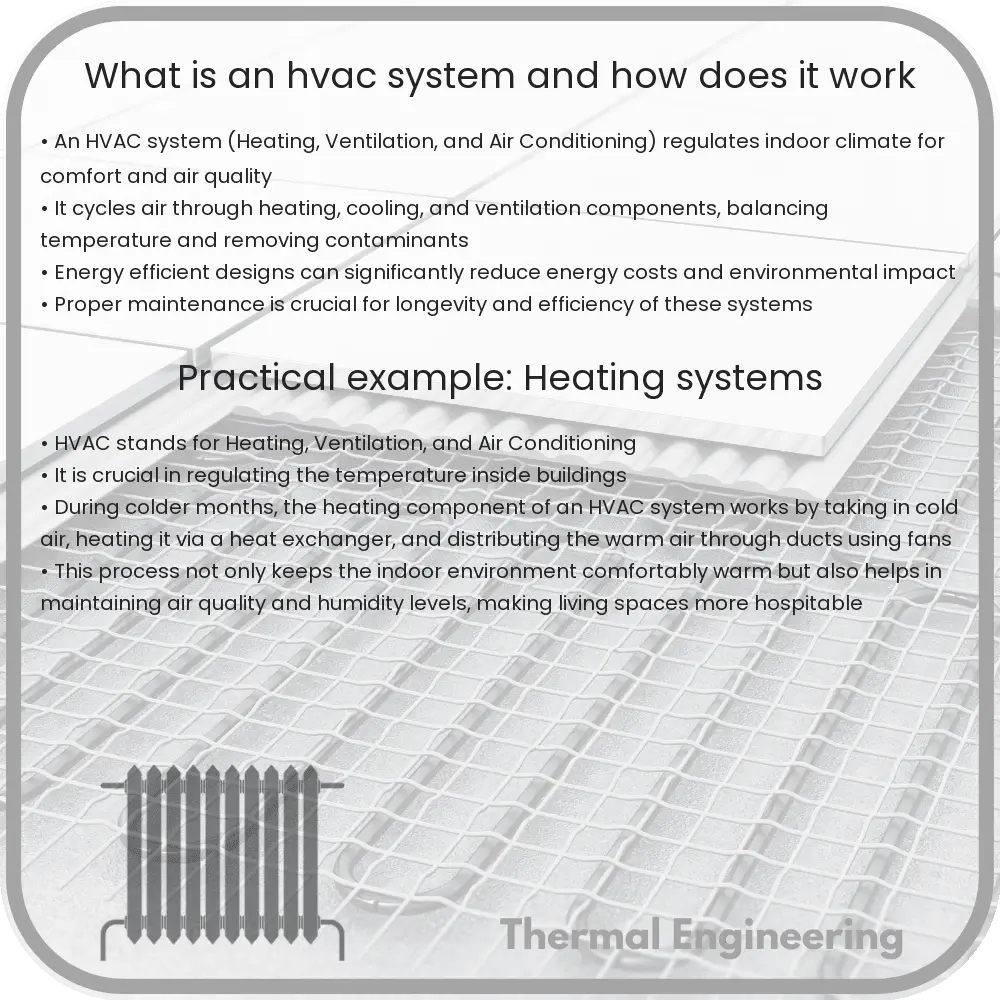Learn about HVAC systems, their key components (heating, ventilation, air conditioning), how they function, and their importance in maintaining indoor air quality and comfort.

What Is an HVAC System and How Does It Work?
An HVAC system, standing for Heating, Ventilation, and Air Conditioning, is a technology of environmental comfort. Its goal is to provide thermal comfort and acceptable indoor air quality. HVAC system design is a subdiscipline of mechanical engineering, based on the principles of thermodynamics, fluid mechanics, and heat transfer. HVAC systems are a vital part of residential structures such as single family homes, apartment buildings, hotels, and senior living facilities, medium to large industrial and office buildings such as skyscrapers and hospitals, vehicles such as cars, trains, airplanes, ships and submarines, and in marine environments, where safe and healthy building conditions are regulated with respect to temperature and humidity, using fresh air from outdoors.
Components of an HVAC System
- Heating: This component is responsible for increasing the temperature of the air inside the building. This is often achieved through a furnace or a boiler primarily in residential settings. Heat pumps can also be used by extracting heat from external sources.
- Ventilation: Ventilation involves the exchange of air to the outside as well as circulation of air within the building. It is an essential factor for removing airborne bacteria, dust, carbon dioxide, and other gases, and for controlling odor and oxygen replenishment.
- Air Conditioning: Air conditioning systems cool the air within the building, removing excess humidity and optimizing the comfort level.
How Does an HVAC System Work?
Here’s a simplified explanation of how the typical home HVAC system operates:
- Thermostat Detection: Everything starts when the thermostat detects that the indoor temperature is higher than the desired setting in the case of cooling, or lower in the case of heating. This detection triggers the HVAC system to begin circulating air.
- Air Return: The process starts with the air return pulling in air, passing it through a filter to remove airborne particles like dust and lint. This helps maintain indoor air quality.
- Heating or Cooling: Depending on the settings of the thermostat, the air is either sent to be heated or cooled and possibly humidified or dehumidified. In the case of heating, furnaces or heat pumps may convert electricity, gas, or oil into heat which is then distributed. For cooling, the air conditioner’s evaporator coil absorbs heat from the air and cool refrigerant then flows through the coil, cooling the air further.
- Air Distribution: Once the air is treated, it is pushed through the ductwork and into the various rooms of the home to maintain a comfortable atmosphere. The cycle repeats to ensure the temperature remains at the desired setting.
The efficiency and effectiveness of an HVAC system are not just in its ability to heat or cool a space, but in its design and operations like zone control, humidity control, and filtration which work together to ensure optimum functionality and comfort.
The Importance of Regular HVAC Maintenance
To ensure that an HVAC system operates efficiently throughout its service life, regular maintenance is necessary. This includes tasks like changing filters regularly, cleaning ducts, checking for leaks, and making sure that all components are functioning correctly. Systems that are well-maintained not only last longer but also contribute to better health and well-being by ensuring clean and comfortable indoor environments.
Understanding how an HVAC system works helps homeowners and building managers make informed decisions about maintenance and upgrades, as well as proactive measures to reduce energy use and cost while maintaining comfort.